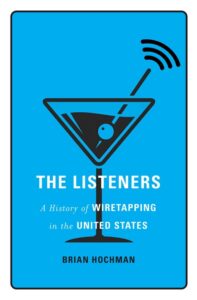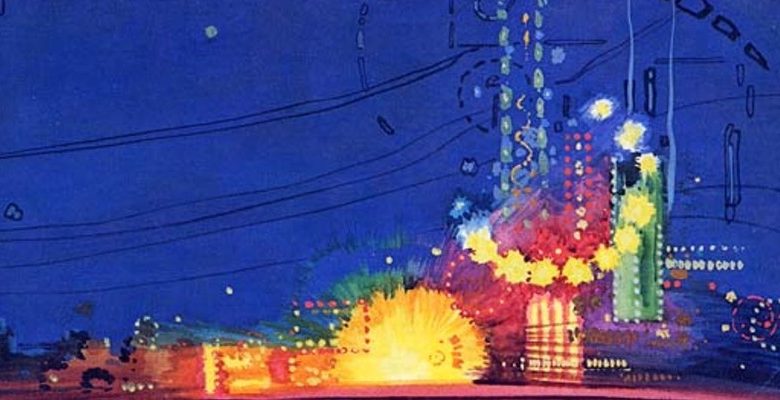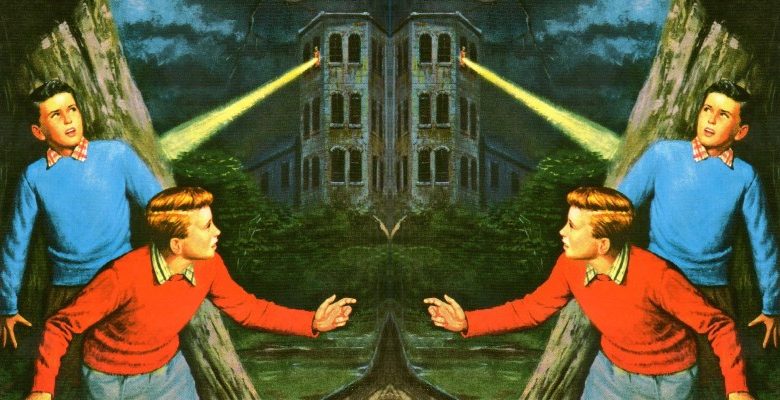[ad_1]
Perhaps predictably, the most famous movie about electronic eavesdropping ever made, Francis Ford Coppola’s The Conversation (1974), ends with a telephone call.

After discovering that he has facilitated the murder of a high-powered corporate executive, professional wiretapper Harry Caul (Gene Hackman) sits alone in his apartment, playing his saxophone along with the jazz recording that blares from his stereo. Harry’s number is unlisted, so when the sound of a telephone interrupts his performance he hesitates to pick up the receiver. At first no one responds on the other end of the line. But the phone rings a second time a few moments later, and the high-pitched sound of rewinding audiotape answers Harry’s reluctant greeting. A familiar voice cuts in—“We know that you know, Mr. Caul. For your own sake don’t get involved any further. We’ll be listening to you”— and to underscore the threat, we hear a recording of the tune that Harry has just played on his horn. Realizing he has been bugged, Harry abruptly hangs up the phone.
In the film’s bleak final act, Harry dismantles his apartment in search of the hidden recording device. He starts by examining locations that were known to be the favorites of the men who pioneered the business of bugging. He inspects a picture frame and studies the inner workings of an electrical switch. He peers into an air vent and checks the curtains that hang from his windows. Still on the hunt, he scrutinizes the knickknacks on his bookcase, resting his eyes on a small, plastic statuette of the Virgin Mary. Too scandalized to proceed, Harry turns his attention to a light fixture and a telephone. But the camera pans back to the statuette. Could the microphone really be inside? Harry takes one final look— pausing, as if to ask for forgiveness—and smashes the idol with his fist, sending the bookcase tumbling to the floor. Still nothing.
Figure 7.1. Harry Caul (Gene Hackman) checks his telephone for an eavesdropping device at the end of Francis Ford Coppola’s The Conversation. The Conversation, Paramount Pictures, 1974.
Coppola’s final shots capture Harry in desolation. He peels back the wallpaper and pulls up the floorboards, but there’s still no sign of the bug. While the film’s credits roll, the camera pans back and forth across the ruined expanse of Harry’s apartment, simulating the slow sweep of closed-circuit surveillance feed.
Every time I teach The Conversation, my students want to talk about this scene. Perhaps it’s because the smashing of the Virgin Mary provides a rare moment of clarity in a film otherwise clouded by narrative ambiguities. The heavy-handed imagery wasn’t lost on the critics who first reviewed the movie when it was released in the spring of 1974. For Nora Sayre of the New York Times, the final scene of The Conversation showed how easily the modern-day eavesdropper might “wind up a victim of his craft.” A critic in the Wall Street Journal, convinced that Coppola wanted to make a modern-day technological “horror story,” took Sayre’s observation one step further: in an age of pervasive electronic surveillance, the average American, much like Coppola’s Harry, would find sanctuary only by “destroying [the] private self,” obliterating the ideals, both secular and sacred, on which the myth of man’s private castle once stood. For some reviewers, the image of the shattered Virgin Mary stood out because Coppola made Harry’s devout Catholicism a special point of emphasis throughout the film.
“Like the dismembered telephone that reveals nothing but circuitry,” Lawrence Shaffer noted in a 1974 article on The Conversation for Film Quarterly, “the icon too is empty.” In a world where technologies of all sorts invisibly trespass on the sanctity of the private individual, the Virgin Mary “hold[s] no answers.” Harry has lost faith. But why?
For many viewers in 1974, and for many in the decades since, current events would offer a convenient explanation. Almost as soon as The Conversation premiered, filmgoers and critics began enumerating a laundry list of chance connections between the film’s plot and the Watergate scandal, another affair of hidden bugs and empty icons that had shaken the faith of so many Americans in the early 1970s. Some of them seemed impossible to chalk up to coincidence.
Much of The Conversation follows Harry as he reconstructs surveillance recordings on an Uher 5000 model reel-to-reel deck, the same machine that Richard Nixon’s long-time assistant, Rose Mary Woods, used to transcribe the president’s Oval Office conversations. And like Nixon himself, Harry’s final descent into paranoia and paralysis comes as a result of recordings of his own making, a fictional turn of events that recalled Time magazine’s controversial April 30, 1973 cover, which showed the principals of the Watergate conspiracy tangled in a web of incriminating audiotape. A more direct connection between The Conversation and the political crisis in Washington involved Harold Lipset. At the exact same time that Lipset served as an investigator for the Senate Watergate Committee, following leads for the group’s chief counsel, Samuel Dash, the San Francisco private eye volunteered as a “technical advisor” on the set of Coppola’s film. (Lipset’s name appears in the credits that overlay the movie’s celebrated opening zoom shot.) Lipset was forced to resign from the Watergate investigation when his lone criminal conviction for electronic eavesdropping came under public scrutiny. Nevertheless, news outlets around the country relied on his dismissive assessment of the Oval Office recording setup (“adequate, but not professional”) as the drama in Washington came to a close.
In hindsight, the final sequence of The Conversation can itself be read as a darkly ironic riff on a refrain that Nixon was known to have repeated to White House staffers when rationalizing his administration’s record of wiretap abuse: “For Christ’s sake, everybody bugs everybody else.” The president wasn’t alone in succumbing to cynicism about the pervasiveness of electronic surveillance. One month before The Conversation appeared in theaters, the media theorist Marshall McLuhan remarked that the “whole matter of privacy is suspect. The Watergate affair makes it quite plain that the entire planet has become a whispering gallery, with a large portion of mankind engaged in making its living by keeping the rest of mankind under surveillance.” Both McLuhan and Nixon appear to have known what Harry somehow doesn’t, at least until The Conversation’s dramatic concluding scene: even the buggers were bugged.
Sentiments like these were widespread by 1974. Contrary to popular memory, Watergate didn’t so much spark as corroborate the belief that electronic surveillance was everywhere in American society, a permanent fixture of the paranoid order of things. Coppola, for his part, wrote a treatment for The Conversation as early as 1966, six years before the break-in at the Democratic National Committee headquarters in Washington set off the Watergate scandal. By the time Coppola managed to shoot the film, which he described to reporters in 1972 as a meditation on the “nightmarish situation that has developed in our society, a system that employs all the sophisticated electronic tools that are available to intrude upon our private lives,” popular images of wiretapping and bugging had come to stand in for cultural crises of all sorts. They would continue to serve that function long after Nixon’s downfall. Hollywood films such as Alan Pakula’s Klute (1971) and Sydney Lumet’s The Anderson Tapes (1971) prominently featured wiretapping in an effort to dramatize quotidian assaults on individual privacy. Others—The French Connection (1971), The Day of the Jackal (1973), The Parallax View (1974), Three Days of the Condor (1975)—used wiretaps and bugs as throwaway plot devices, tools that fictional characters could rely on to survive in the corrupt worlds they inhabit.
On stage, the playwright Arthur Miller made the ubiquity of electronic surveillance the basis for The Archbishop’s Ceiling (1977), a drama set in eastern Europe that revolves around a group of writers who discuss their dissident political views in a bugged sitting room. In the preface to a revised edition of the play produced in 1984 (the year of its re-release was no accident), Miller went so far as to characterize the late 1960s and early 1970s as the “era of the listening device.” He compared his experience in the United States during those years to that of a subject living under totalitarian rule behind the Iron Curtain. In both places, Miller explained, ordinary people went about their daily business assuming that “power’s ear is most probably overhead.”10
American culture took its paranoid turn at something of a paradoxical moment. As a number of historians have pointed out, popular anxieties about the pervasiveness of wiretapping and electronic eavesdropping reached a fever pitch at the same time that efforts to regulate privacy began making concrete gains on the national stage. On one hand, the twin issues of privacy and surveillance gained a “sudden visibility” in some of the most consequential judicial decisions of the sixties and seventies. In a series of rulings that probed the limits of the government’s right to wiretap—Berger v. New York (1967), Katz v. United States (1967), and United States v. United States District Court (1972)—the U.S. Supreme Court brought order to the chaos of the nation’s eavesdropping laws and established new standards for protecting privacy in the electronic age. On the heels of Griswold v. Connecticut (1965), a historic case involving the use of contraceptives by married couples, the Court’s wiretapping decisions of the late 1960s and early 1970s transformed privacy from a civic ideal to a constitutional rule, creating the modern “right to privacy” that we know and invoke today.
On the other hand, privacy and surveillance also gained visibility in the halls of Congress. While the Supreme Court worked to lay the constitutional foundations for modern privacy rights, lawmakers on both sides of the aisle commissioned high-profile studies of surveillance abuse, campaigned on promises of privacy reform, and opened the legislative gates for a flood of new laws intended to protect private life against the incursions of government and technology. In 1968, Congress passed Title III of the Omnibus crime Control and Safe Streets Act, a major piece of wiretap legislation designed to protect the “privacy of innocent persons” while legalizing police wiretapping under judicial supervision. A host of rights-minded privacy laws would follow in the coming years: the Fair Credit Reporting Act (1970), the Family Educational Rights and Privacy Act (1974), and the Privacy Act (1974). Later, in response to the Watergate scandal and the Church Committee intelligence investigations, the passage of the Foreign Intelligence Surveillance Act (1978) ended more than four decades of uncertainty surrounding the legality of national security wiretapping, establishing protocols to check the government powers that had led to the warrantless surveillance of countless American artists, activists, and political organizations: from Abby Hoffman and Alan Ginsburg to the Socialist Workers Party and the Southern Christian Leadership Conference. A wholesale revolution in privacy and surveillance oversight seemed to have unfolded over the course of a decade. At least in theory.
In practice—as Coppola, who tapped his first telephone at the age of thirteen, doubtless understood—the revolution was one in name only. Visibility could obscure as much as it revealed. Even though the late sixties and early seventies seemed to herald a newfound national commitment to protecting privacy and limiting surveillance, the era’s signature pieces of electronic surveillance legislation had the ironic effect of normalizing taps and bugs in areas of American life that would have seemed unthinkable only a decade prior. It’s here, at long last, that we can arrive at a viable interpretation of Harry Caul’s crisis of faith at the end of The Conversation. As much as the upheavals of the sixties and seventies shed frightening new light on threats to individual privacy in America, the basic political response to the period’s surveillance scandals was to enshrine government eavesdropping into law, scrubbing the “dirty business” of wiretapping clean in the process. At the time, and in the decades since, that paradox mostly escaped public notice, hidden as it was in explosive national debates about race and crime, dissent and conformity, law and order.
Perhaps, then, the reality of the “era of the listening device,” like Harry’s missing bug, was never really visible in the first place.
___________________________________
Excerpted from THE LISTENERS: A HISTORY OF WIRETAPPING IN THE UNITED STATES by Brian Hochman, published by Harvard University Press. Copyright © 2022 by the President and Fellows of Harvard College. All rights reserved.

[ad_2]






